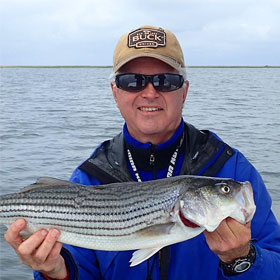8 Things to Include On a Small Boat Safety Checklist
By Ken Schultz
Jun 29, 2019
Making and referring to a small boat safety checklist ensures you have required and optional equipment with you on the water. Here’s what should be on the list.
As someone who has been fishing from a small boat my whole life, I cringe if I see any watercraft whose occupants have clearly just jumped in and headed off, maybe with almost nothing in the boat but themselves, and often obviously overloaded. Sometimes I think that the gunwale of every boat should have a non-removeable small boat safety checklist affixed to it by the boat manufacturer.
They don’t, of course, but you can make up your own small boat safety checklist. I actually have two checklists for my own use, one for kayaks and one for other types of small boats. They incorporate other things for small boat fishing beside safety items, and I refer to them before every trip to the water to make sure I’m not forgetting something I must, or want, to have along.
There are safety items that you must have, and safety items that you should have. These vary depending on the size and type of boat. A small boat has less requirements for safety equipment, but no less need for being concerned about safety. This post explains those requirements in greater detail.
Defining a small boat as one under 20 feet in length, which can include a high-horsepower bass boat as well as a non-powered 12-foot jonboat or kayak, here are the top things that should be on your small boat safety checklist:
1. Drain Plug
You’re going nowhere without one in place, and it should fit snugly into the transom drain hole.
2. Life Jacket (PFD)
State and federal laws mandate having an appropriately sized personal flotation device (PFD) for each person onboard. Youths under a certain age (check your state rules) must also wear a PFD at all times while on a small boat.
3. Fire Extinguisher
This would apply to boats over 16 feet long and those with a permanent or unmovable gas tank.
4. A sound-making device
This includes a horn, bell, or whistle, the latter being most common for kayakers, canoeists, and those in small aluminum or wooden craft.
5. A Visual Distress Signal
Boats under 16 feet are exempt from this requirement, but having a flare or at least a flag might be a lifesaver one day.
6. Navigation Lights
Navigation lights are a night-time consideration, and a requirement for larger vessels. Small, non-powered boats should be able to produce a light to ward off a collision, and a white stern light is preferable.
7. Miscellaneous needs
While not strictly safety items per se, you should also have these items when boating and when fishing from a small boat: dock line for securing the boat; an anchor and sufficient anchor line; one or more oars or paddles. Add them to a small boat safety checklist anyway.
8. Total weight review
Lastly, make sure that the total weight of occupants and gear will not exceed the maximum capacity of the boat, which would create an unsafe condition, and make capsizing due to wave action or shifting bodies a real concern.









